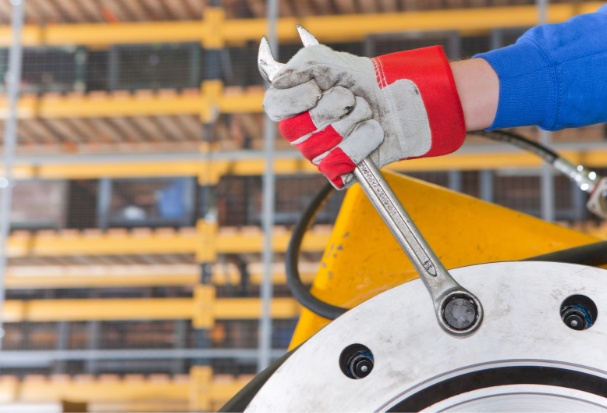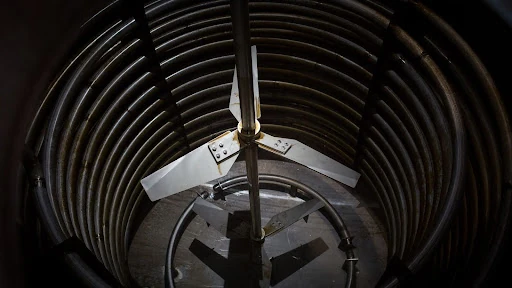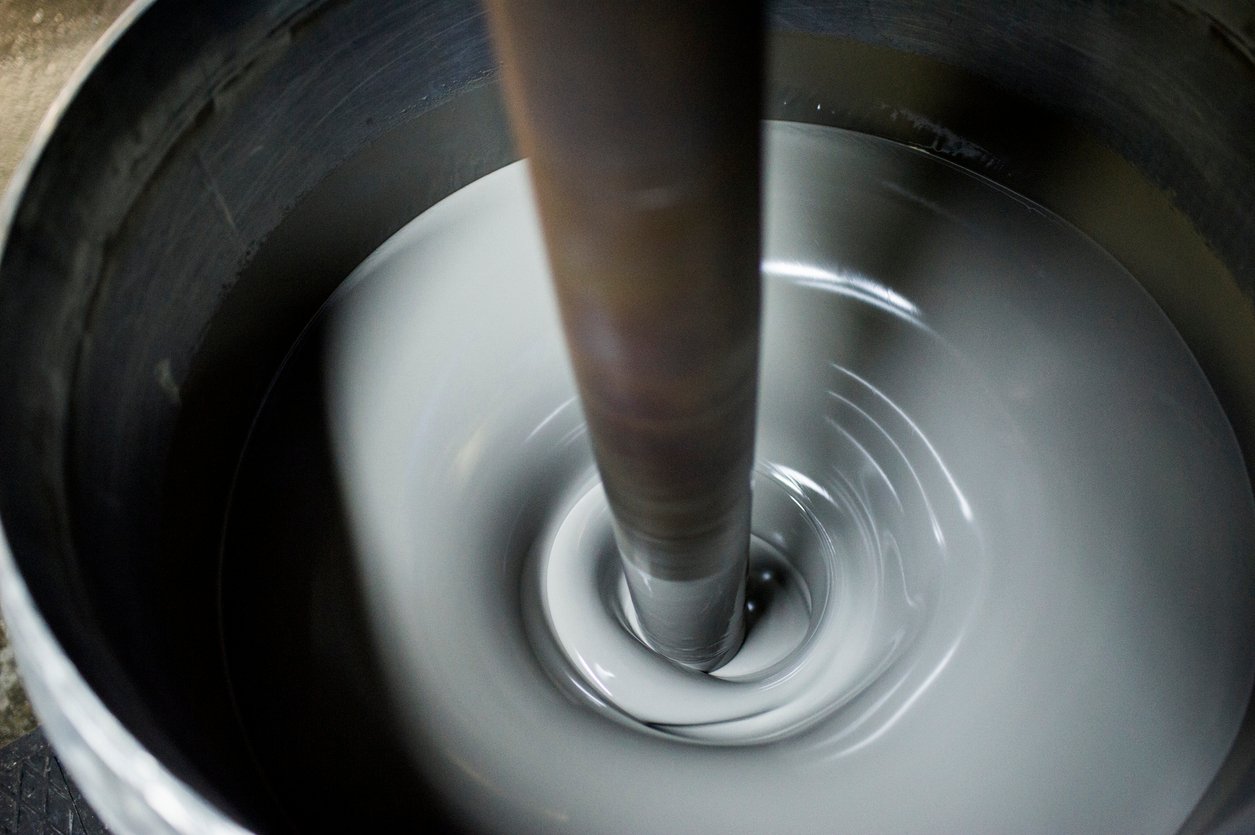Preventative Mixer Maintenance: A Checklist For Industrial Mixer Care
Imagine two cars, both the same make and model, driving down the highway. One car is well-maintained, with regular oil changes, tune-ups, and tire...

Access MXD Process resources including blogs, technical guides, manuals, and maintenance tips—everything you need to optimize, troubleshoot, and expand your process knowledge.
Discover who we are, the industries we serve, and the trusted brands behind our process equipment and environmental solutions. Learn how our team brings precision, innovation, and reliability to every project.
4 min read
MXD Process Mar 12, 2024 4:33:31 PM
Oftentimes, we make decisions based on finding a solution that will work for a low price. While it may not be the most optimal choice, it’ll still get the job done. However, then we’re faced with low performance or efficiency down the road.
Instead, customizing your industrial mixer parts gives you the highest quality for your specific application needs, enhancing your productivity, efficiency, and return on investment without breaking your budget.
Customizing an industrial mixer is more than simply choosing the color, size, horsepower, or impellers. Industrial mixer customization involves tailoring various aspects of the mixer’s design, components, and operational parameters to meet the specific needs of a production process. It can range from adjusting the mixer’s size, shape, and materials it’s made to selecting the specific types of mixing blades, motor, shaft length, and impeller number and size.
Unlike standard mixers that come with predefined “one-size-fits-all” configurations, customized mixers are fully adapted to handle your unique materials, performance expectations, and integration into your current processes.
Since there are several different types of mixers, there are also different mixer designs, including:
Tank-mounted mixers are a common mixer design utilized across various industries. As the name implies, these mixers are fixed directly to a tank or vessel via an ANSI flange or plate mount. These mixers are typically used for bulk mixing in large-volume processes and are more permanent in their placement.
Portable mixers are used in smaller-volume processes to provide low to medium-shear blending in numerous applications. Portable mixers are lightweight and highly versatile. They can be mounted using sanitary tri-clamp fittings, NPT fittings, or clamped directly to the side wall of a small tank. Simple in design and easy to clean, these mixers are the “workhorses” of industrial mixing.
Inline mixers, also known as continuous mixers, are designed to continually process ingredients. Fluids are mixed in motion, which provides consistent and uniform mixing without the need for tanks or holding vessels.
These mixers are particularly beneficial for processes requiring blending with liquids of similar or varying viscosities, emulsification, and rapid dispersion of powders into liquids. Typically, they’re designed for applications where space isn’t a concern due to their minimal space requirements and ability to handle large volumes.
High-shear mixers are designed specifically for high-speed and high-shear forces to create an intense mixing action to break down particles. These mixers have a unique rotor-stator design, where a high-speed rotating element creates a suction to draw materials into the shear zone.
With this enhanced design, high-shear mixers are ideal for thorough emulsions, fine suspensions, and dispersions.
Planetary mixers are designed with a dual-motion – the mixing blades rotate on their own axes and also orbit around the mixing bowl. These mixers are designed with the ability to attach different types of mixing blades or whisks to add to their versatility – making them suitable for a variety of processes.
Additionally, planetary mixers are intended for highly viscous, tough-to-blend ingredients. Their design allows them to take on these applications with ease.
Mixer blades and impellers are a vital part of the mixing process by creating the flow and shear forces necessary to blend, emulsify, dissolve, or disperse ingredients.
Impellers are rotating devices designed to alter the flow and speed of fluids in the mixing process. They come in various designs, such as:
Each type of impeller is designed for a specific purpose. For example, axial flow impellers are efficient for liquid-liquid mixing or when suspending solids in liquids. On the other hand, radial flow impellers offer high shear levels and are ideal for gas-liquid reactions or dispersing solids into liquids
Dispersion blades are a specific type of impeller designed to disperse one phase into another. These blades are characterized by their high shear and high-speed capabilities, which can break down agglomerates and distribute particles evenly.
Typically, dispersion blades can be found in applications when powders are uniformly mixed into liquids, such as paint or cosmetic manufacturing.
When customizing industrial mixer parts, like blades and impellers, you should consider the following to help enhance mixing efficiency, product quality, and process reliability:
It’s essential to consider the physical and chemical properties such as viscosity, density, and sensitivity to shear before choosing industrial mixer parts. For high-viscosity materials, impellers should be designed to promote bulk movement and reduce power consumption. For shear-sensitive materials, low-shear impellers should be used.
The primary mixing objective must be identified before finding the best mixer. For example, high-shear mixer blades are better suited for emulsifying and dispersing, while paddle impellers might be better for gentle mixing or blending.
Taking the operating conditions into account is critical. The materials used to construct the blades and impellers should be compatible with the different conditions – varying temperatures, pressures, or mixing speeds.
There are many customization options available for mixing blades and impellers. When choosing an industrial mixer part for your application, choose based on what can directly impact performance.
For example, customizing the dispersion blades can include changing the blade design to increase tip speed for more efficient particle size reduction. On the other hand, customizing the impeller’s diameter, pitch, or number of blades will allow for more flow patterns and mixing intensity control.
Customizing your industrial mixer and tailoring it to the specific needs of your production process can unlock several advantages. Not only does it ensure your mixing operations are optimized for efficiency and effectiveness, but it also contributes to higher product quality and operational cost savings.
If you’re ready to begin designing mixer parts for your processes, our team at Mixer Direct is happy to help. Our team is fully trained to find the best industrial mixer parts for your mixer and is here for you when you’re ready or start browsing available products now.

Imagine two cars, both the same make and model, driving down the highway. One car is well-maintained, with regular oil changes, tune-ups, and tire...

If you have no idea what kind of mixer you need, but you know you need one, you are in the right spot.

Ever wonder how industries keep up with the huge demand for everyday products? Industrial mixers are a big part of the answer. Whether it’s food,...